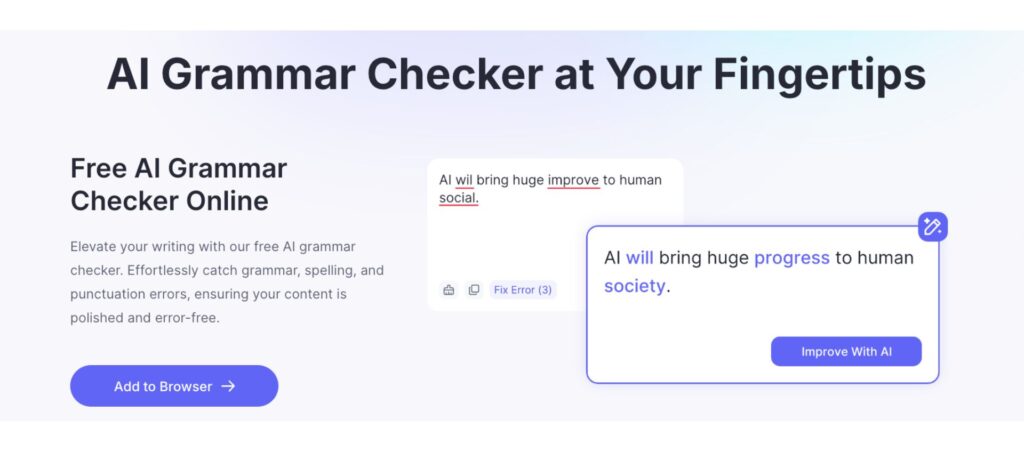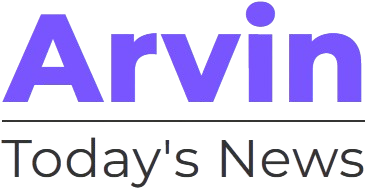Ever paused mid-sentence and wondered, “Is it labelled or labeled?” It’s one of those moments that makes you stop and rethink everything—okay, maybe not everything, but still, it’s worth getting right. This tiny spelling difference isn’t just about nitpicking—it’s about knowing your audience and writing with confidence.
Say goodbye to spelling confusion—Arvin AI makes writing for any audience effortless.
Labelled or Labeled Meaning
Labelled and labeled both mean the same thing—they describe the act of attaching a label, whether it’s a tag on a product, a sticker on a jar, or even a metaphorical label for categorizing something. The difference lies in spelling, depending on where you are in the world.
In British English, labelled is the preferred form, commonly used in places like the U.K. or Australia.
- Picture this: At London Fashion Week, each garment on the runway is carefully labelled with its designer’s name and collection details—precision and elegance at its finest.
In American English, labeled is the standard spelling, seen across the U.S.
- Think of the labels on coffee blends at a New York café, where “Dark Roast” or “Pumpkin Spice” neatly identify the options to match your vibe.
These regional quirks don’t change the meaning, but knowing which spelling to use can keep your writing polished and tailored to your audience.
Labelled or Labeled Examples
In a Classroom
American English:
- “The teacher labeled each cubbyhole with bright, colorful stickers showing the students’ names, ensuring everyone had their own space. For a touch of fun, she added little icons, like stars or dinosaurs, making the kids excited to organize their belongings.
British English:
- “At the primary school in Oxford, each child’s project was labelled with neat handwriting on recycled paper tags, reflecting the school’s eco-friendly ethos. Even the display boards were colour-coordinated to make every student feel like their work mattered.
In the Fashion Industry
American English:
- “Minimalist tags labeled each garment at the New York pop-up shop, showcasing material details, washing instructions, and QR codes for sustainability reports. Shoppers could scan the tags and see the entire journey of their chosen outfit—from design to delivery.”
British English:
- “Exquisite hang tags made from textured cardstock, embossed with gold lettering, labeled dresses in the boutiques of Notting Hill. Each tag added a touch of luxury, making every purchase feel as special as the garment.”
Shopping Experiences
American English:
- “Rustic kraft paper tags tied with twine labeled jars of honey at a farmer’s market in California, featuring handwritten descriptions like ‘Wildflower Honey’ and ‘Clover Blend.’ Each tag included a QR code, connecting shoppers to videos about the beekeeping process.”
British English:
- “Handwritten chalk signs labeled the freshly baked sourdough bread at Borough Market in London, listing allergen information and a note about the local bakery. The charming, artisanal vibe delighted customers.”
In Social Media Content
American English:
- “A lifestyle influencer labeled her pantry organization posts with hashtags like #DeclutterGoals and #PantryPerfection, attracting thousands of likes and inspiring followers to tackle their own cluttered kitchens.”
British English:
- “For a charity bake sale in Manchester, the organizers labelled their Instagram photos with #BakeForHope, creating a wave of reposts and raising funds for a local hospice. Each label tied the baked goods to the cause, making the event personal and meaningful.”
Pop Culture References to Labels
American English:
- “In Mean Girls, Regina George metaphorically labeled everyone in her high school, turning people into clichés like ‘the math nerd’ or ‘the art freak.’ It’s a sharp reminder of how labels, literal or not, can shape perceptions.”
British English:
- “In Love Actually, Rowan Atkinson’s over-the-top gift-wrapping scene feels like an ode to perfectly labelled and packaged presents—because sometimes, the details matter more than the gift itself.”
The Key Differences Between Labelled and Labeled
The difference between labelled and labeled comes down to spelling and where you’re from. Both words mean the same thing—they’re all about attaching a label to something for identification or organization. The choice between them simply depends on whether you’re using British or American English.
| Aspect | Labelled (British English) | Labeled (American English) |
| Spelling | Used in British English and Commonwealth countries (e.g., U.K., Canada, Australia). | Used in American English. |
| Pronunciation | Both are pronounced the same: LAY-buhld. | Both are pronounced the same: LAY-buhld. |
| Example | “The jars were labelled with handwritten tags.” | “The folders were labeled by category for easy access.” |
| Grammar Rule | Retains the double “l” after a vowel, consistent with British conventions. | Drops the second “l” after a vowel, as per simplified American rules. |
| Usage | Preferred in British publications, packaging, and formal documents. | Commonly used in U.S. books, business communications, and branding. |
Why the Spelling Difference Exists
The spelling difference between labelled and labeled originates from the evolution of English across regions. British English, commonly used in the U.K., Canada, and Australia, preserves traditional spellings with double consonants, as seen in words like labelled, cancelled, and travelled. These forms reflect older conventions from a time when English spelling was less standardized.
American English, however, took a simpler route. Noah Webster, the man behind Webster’s Dictionary, wanted to make English more practical and accessible. In the 19th century, he streamlined many spellings, dropping extra letters like the second “l” in words such as labeled, canceled, and traveled. This approach has shaped the way Americans write today.
Whether you’re labeling in the U.S. or labelling in the U.K., Arvin AI keeps your writing flawless.
Labelled or Labeled Synonyms
Tagged
“Tagged” works perfectly for physical labels, especially in travel or logistics.
- “Remember the scene in Home Alone 2 when Kevin’s suitcase gets lost? A proper tag could have saved the day—and shortened the movie to five minutes!”
Marked
“Marked” fits when symbols or identifiers highlight something specific.
- “Apps like Google Maps mark locations with pins to guide users to their destinations, offering a modern twist on traditional map navigation.”
Categorized
“Categorized” emphasizes organization and grouping, often used in digital or retail spaces.
- “Netflix categorizes its shows into labels like ‘Top 10 in the U.S.’ or ‘Trending Now,’ helping viewers find their next binge-worthy series.”
Identified
“Identified” suits settings where clarity and learning are key.
- “At botanical gardens, plants are identified with small plaques displaying their names and origins, offering visitors a chance to learn about rare species.”
Stamped
“Stamped” works well for formal or official labels, especially in branding or packaging.
- “In Harry Potter, the Hogwarts letters are stamped with a wax seal, symbolizing authenticity and tradition. It’s an iconic detail fans never forget.”
Named
“Named” fits when the label is a title or creative branding element.
- “Beyoncé names her albums with bold titles like Renaissance and Lemonade, labeling the entire project’s mood and message with just one word.”
Designated
“Designated” works when labeling assigns roles, spaces, or privileges.
- “At Coachella, VIP areas are designated with special signs, making it clear who gets access to the exclusive lounges.”
Labelling Examples
- At the local market, staff were busy labelling shelves with signs like ‘Organic Produce’ and ‘Locally Sourced Honey,’ making it easy for customers to navigate.
- Spotify has mastered the art of labelling playlists, with catchy names like ‘Mood Booster’ and ‘Throwback Hits’ helping users find the perfect soundtrack for their day.
- After labelling all the jars in her pantry, from ‘Pasta’ to ‘Spices,’ the kitchen felt like a Pinterest-worthy masterpiece.
Other Commonly Confused Words:
1. Affect vs Effect
- “In The Devil Wears Prada, Miranda’s sharp critiques affect Andy’s confidence at first, but ultimately, they have the effect of making her stronger and more capable.”
“Still unsure about ‘affect’ and ‘effect’? Check out our blog to clear up the confusion!”
2. Compliment vs Complement
- “In Queer Eye, the Fab Five don’t just compliment someone’s outfit; they choose clothes that complement their personality and lifestyle.”
Learn the difference between kind words and perfect pairings. Read more in our blog!
3. Principal vs Principle
- “In Matilda, the principal Miss Trunchbull breaks every principle of kindness, making Matilda’s fight for fairness even more inspiring.”
4. Stationary vs Stationery
- “At Dunder Mifflin in The Office, you’d expect top-notch stationery, but the employees spend most of their time stationary in awkward meetings.”
5. Farther vs Further
- “In Forrest Gump, Forrest runs farther with every challenge, but the story further explores themes of perseverance and kindness.”
Final Words
So, here’s the bottom line: if you’re writing for an American audience, stick with labeled. If your readers are in the U.K. or Commonwealth countries, go with labelled. It’s a small difference, but one that shows attention to detail—and let’s be honest, who doesn’t appreciate that? And if you’re still second-guessing? Don’t worry—Arvin AI’s Grammar Checker has your back.
Share this blog with anyone who might need it—because let’s face it, we’ve all Googled spelling questions at some point.

Ready to write with confidence? Try Arvin AI today, and let your words shine every time! 😊
FAQ:
Both are correct. Labeled is used in American English, while labelled is British English.
In Canada, labelled is the preferred spelling, following British English rules.
Labelled means something has been marked or tagged for identification.
Label is the base form. Labeled is the American past tense, while labelled is the British past tense.




